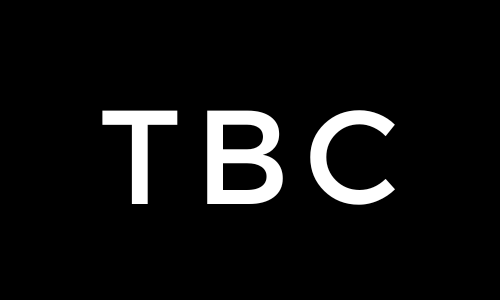Google AdSense has long been the go-to choice for website owners looking to monetize their content, but it isn’t always the best fit for everyone. So, if you’re dealing with an AdSense ban, low earnings, or simply looking for more flexibility and control, plenty of alternatives offer competitive features and payouts. Here’s a breakdown of the top alternatives to Google AdSense that could work better for your site’s needs.
1. Media.net
Media.net is a popular alternative to AdSense, offering contextual ads powered by the Yahoo! Bing network. One of its main advantages is the high-quality ads it serves, which are relevant to your content, leading to higher engagement and click-through rates (CTR).
- Pros: Strong CPM rates, large advertiser base, excellent ad customization options, easy to set up.
- Cons: Payout thresholds are a bit high, and earnings can fluctuate depending on niche.
- Best for: Bloggers and publishers with U.S. and UK traffic.
2. Ezoic
Ezoic is more than just an ad network—it’s an AI-driven platform that helps optimize ad placement, improving user experience and revenue. With its powerful analytics and testing features, Ezoic is great for publishers looking to maximize earnings.
- Pros: AI-driven optimization, multiple ad formats, increased control over ad placement.
- Cons: Requires integration with your website, which may involve some technical setup.
- Best for: Sites with over 10,000 monthly visitors, especially those seeking to optimize ad performance.
3. PropellerAds
If you’re looking for an alternative that supports a wide range of ad formats, PropellerAds is a solid choice. It offers display ads, native ads, push notifications, and even interstitials for mobile traffic, which makes it highly versatile.
- Pros: Supports multiple ad types, low payout threshold ($5), works well with low-traffic websites.
- Cons: Pop-up ads might impact user experience if not managed properly.
- Best for: Smaller websites, mobile traffic-heavy sites, and sites with international visitors.
4. AdThrive
AdThrive is one of the most respected ad management platforms, but it’s selective. If you can meet their traffic requirements (100,000 pageviews per month), you’ll benefit from high CPM rates and dedicated support.
- Pros: Excellent CPM rates, high-quality ad placements, and a focus on user experience.
- Cons: High traffic requirement (100k monthly pageviews) and a relatively lengthy approval process.
- Best for: High-traffic websites in niches like lifestyle, food, and parenting.
5. Monumetric
Monumetric is an ad network that focuses on optimizing ad placements for better user experience and higher revenue. While it has a relatively low traffic requirement compared to AdThrive (10,000 monthly pageviews), it still offers solid revenue potential.
- Pros: Low traffic threshold, good CPM rates, better control over ad placements.
- Cons: Setup fee for websites under 80,000 monthly pageviews, not as flexible for small publishers.
- Best for: Publishers with moderate traffic who are willing to pay for professional ad optimization.
6. SHE Media
SHE Media is a women-focused ad network, ideal for publishers in lifestyle, parenting, and fashion niches. They provide a wide range of ad solutions, from display ads to native ads and sponsored content.
- Pros: Great for female-focused content, high-quality advertisers, and a focus on premium ad placements.
- Cons: High traffic requirements (20,000 monthly pageviews) and limited to certain niches.
- Best for: Female-centric blogs in lifestyle, parenting, and health niches.
7. Amazon Native Shopping Ads
If your website has an eCommerce focus or covers products in any way, Amazon Native Shopping Ads are a great alternative to AdSense. They display product ads from Amazon that are related to your content, and you earn a commission for any purchases made.
- Pros: Ties into the massive Amazon affiliate network, product ads that convert well, seamless integration with content.
- Cons: Revenue depends on actual purchases, not just clicks.
- Best for: Product review sites, affiliate marketers, and eCommerce-focused websites.
8. Skimlinks
Skimlinks turns product mentions in your content into affiliate links automatically. This network is ideal for content-heavy sites with lots of product recommendations or reviews, as it simplifies affiliate marketing and allows you to earn without manual effort.
- Pros: Automatic affiliate link generation, access to thousands of merchants, passive monetization.
- Cons: Earnings depend on affiliate sales, not just traffic or clicks.
- Best for: Product review blogs and websites that recommend or link to products frequently.
9. Infolinks
Infolinks offers a unique ad model by serving in-text ads, which appear as hyperlinks within your content. This non-intrusive ad format is perfect for bloggers who want to monetize without cluttering their sites with banners or pop-ups.
- Pros: Non-intrusive ads, works well on all traffic levels, easy to integrate.
- Cons: Lower CPM compared to display ads, depends on user engagement with in-text links.
- Best for: Content-rich sites, blogs, and websites looking for non-disruptive ad solutions.
10. Revcontent
Revcontent is a premium native ad network with high CPM rates but it’s best for publishers with significant traffic. Its native ads blend seamlessly with content, improving user engagement and monetization potential.
- Pros: High-quality native ads, high engagement rates, and great for content-driven websites.
- Cons: Requires significant traffic to join (50,000 pageviews per month).
- Best for: High-traffic blogs and websites with content-rich pages.
In Conclusion…
While Google AdSense is a popular choice for website monetization, it’s not the only option. Depending on your traffic, niche, and monetization goals, there’s an alternative that can deliver better results or suit your specific needs more effectively. So, if you’re looking for higher CPMs, more control, or better ad formats, these alternatives above are great choices for diversifying and maximizing your ad revenue.
Enjoyed this post? Share it with others! For more tips on blogging and making money online, subscribe to our newsletter and never miss an update.
Discover more from The Blog Channel
Subscribe to get the latest posts sent to your email.
